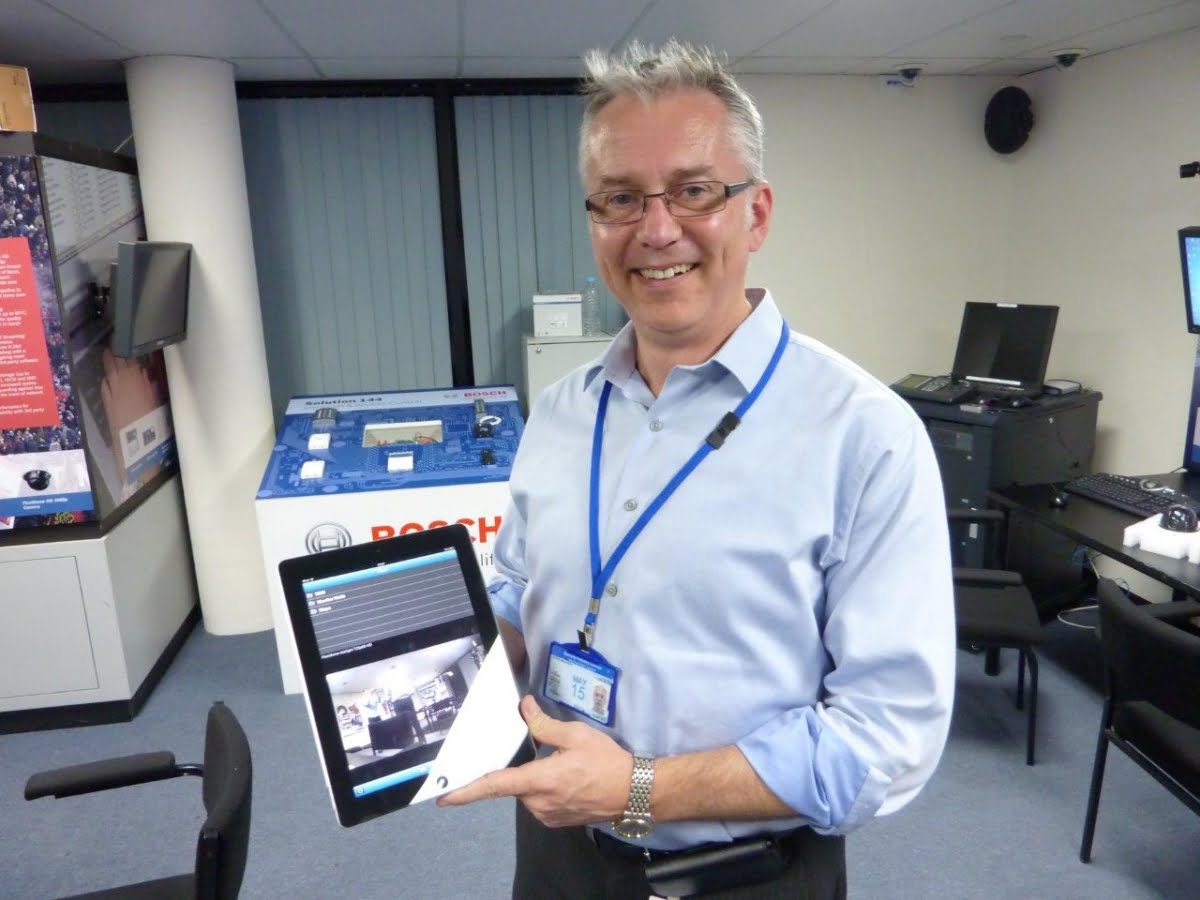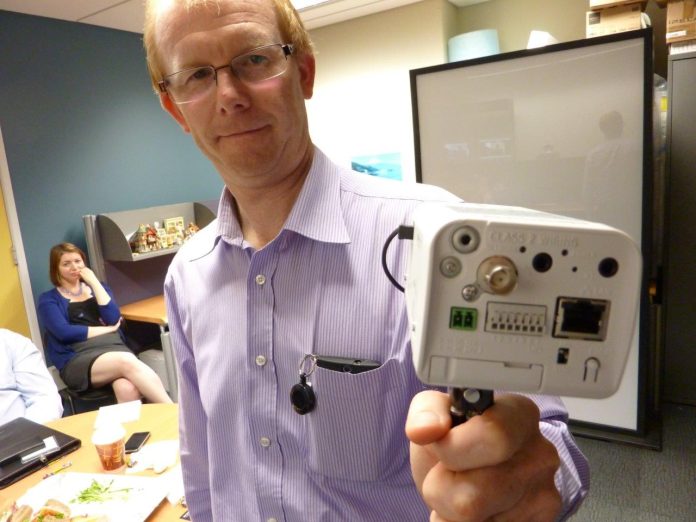We all know networked infrastructure has changed the video surveillance market and we know IP cameras offer some excellent features. But which are the most important to end users and installers today?
LATEST-gen IP cameras are loaded with features. There’s high resolution, 60ips frame rate, low light performance, IR support, wide dynamic range, resistance to motion blur, a range of lens types, onboard storage and on and on it goes on.
I asked group of manufacturers, distributors and installers what they thought was most important based on their knowledge of CCTV technology and the needs of their end user and installer customers. While I didn’t ask them to list the features in order of importance it stands to reason the most important feature for CCTV people would be the one that springs to multiple minds first. For the majority it was low light performance and for a significant minority it was image quality.
According to Sony’s Mark Franklin, the 3 most important features an IP camera needs include the ability to maintain low light performance, high resolution and wide dynamic range without compromising any of these features during a 24-hour period.
“For example, just because it is night-time does not mean that a camera’s dynamic range should be restricted,” Franklin says. “Consider a bright electronic signboard at night with a person walking in front of it. With the wide dynamic range feature turned off, the sign is over-exposed and affects the ability of the camera to see a person walking in front of the sign.
“If the camera can maintain its wide dynamic range at night without having to disable this feature, then it is able to manage the exposure and contrast throughout the day as well as night while also maintaining good low light performance.
“Equally, what good is it to have a camera that is only capable of D1 resolution in order to perform well in low light? In this day and age an IP camera should be able to perform in low light and with HD resolution as well as maintain a wide dynamic range too.
“If I pick the 3 most important features in an IP camera, then low light handling, resolution and wide dynamic range need to be able to co-exist around the clock,” insists Franklin. “Cameras need to operate 24/7 and not compromise on these 3 features.”

Bosch Security Systems' Steve Malesevic
Over at Bosch Security Systems, video systems product manager Steve Malesevic has low light performance on the top of his list.
“With the pressure of business today to reduce costs at every opportunity, improving a camera’s performance in low light conditions will have direct cost reduction benefits,” says Malesevic. “Alleviating the need in many cases to implement additional lighting, whether it be visible or IR light, can markedly reduce the cost of installation in a project.
“Also with cameras that have excellent low light performance, the reduction of noise in a video stream that was produced under low light conditions will have a direct positive impact on storage costs, which on larger projects can be quite a significant reduction.
“In scenes where there is just enough light to allow the camera to stay in colour-mode (ie: not revert to monochrome), the capturing of colour information can significantly aid operators and investigators in the identification process.”
Next on the list for Malesevic is the ability of camera to discern a wider dynamic range.
“Having a camera that performs well in this regard allows the camera to resolve more detail with more clarity in the image it produces,” he explains. “The most basic fundamental requirement of any security camera is to capture as much detail as possible. A camera that has a wider dynamic range can provide this basic need in more diverse conditions.”
Next comes lens quality.
“Like anything, a system is only as strong as its weakest link and in many cases, that weak link is an inferior lens which may be used on a camera of higher quality,” Malesevic explains. “Mostly this is done in an effort to reduce installation costs. The quality of the lenses being used in those cases are simply not on par with the quality of the camera it’s attached to. Consequently, the image quality is compromised.”

Rob Rosa, QSS
For QSS’ Rob Rosa, the ability to handle low light conditions with minimal noise and picture degradation is top of his list.
“Also important is keeping low bit rate while streaming in real time and consistently using a similar bit rate through different changing environments (i.e. busy traffic area and quite no traffic area using similar bit rate),” he explains.
“Then there’s the flexibility to adjust camera settings and focus from browsers (or PC software) and adjusting them according to lighting conditions and any other variables. This makes life of the installer simpler and makes installation times quicker.”
According to Peter, IPC product manager for Dahua, the most important features of an IP camera today are low light performance, IVA and ease of use.
“Most low-light featured cameras today need the assistance of lighting devices like infra red, and the flash (flare) they cause is bad for user experience,” Peter explains. “As you know, the surveillance image that conventional cameras render under low lighting environment is mainly B/W. What I expect is for manufacturers to improve low illumination technology so they can provide 24-hour colour surveillance.
“IVA is also important,” Peter says. “There is no doubt that cameras should be more intelligent. For example, they should notify users what is going on as well as providing them with analysis to further enhance overall efficiency.
“Finally, another important trend is open systems with easy usability. This development is not limited to the conventional video surveillance industry, but also an expansion to the consumer electronics trade. I believe it will be a boom in the home market in this area, which will demand similar usability and interoperability from CCTV cameras.”
Panasonic’s Marcus Vongpraseuth takes a practical approach to what’s important but ultimately he sees WDR, low light and resolution as key. Vongpraseuth says the most important aspect in any surveillance system, whether it’s analogue or IP, is identification.
“There are multiple identification elements in surveillance, including face identification, object identification, text and character identification, colour reproduction, etc,” he says. “Better identification in surveillance means stronger and more usable evidence. The areas where I believe identification is most difficult in surveillance are in strong contrasting lighting conditions and where there is fast and rapid movement.
“To ensure identification is clear and usable as evidence, the 3 key features that are important in a surveillance system are wide dynamic range (Panasonic 6 series Enhances Super Dynamic), low light performance (Panasonic 6 series Super Sensitivity Technology) and high resolution.
“In applications where something will happen, where investigations will take place, you want performance your customer can depend on or it’s a real problem”
For Hikvision's Adler Han, at the top of the list is overall image quality.
“Lots of manufacturers release out network cameras with low-light performance or WDR function and much more,” Han says. “However, there are quite a few cameras having overall image capability to operate in various environments day and night 24/7.
“Hikvision’s newly released DS-2CD6026FHWD network camera addresses this need with low light performance, WDR, 60fps high frame rate and Smart features, this product is the perfect candidate for deployment in challenging environments both day and night.”
Smart capabilities are also important, according to Han.
“Most of the latest IP cameras are equipped with some Smart features, which accelerate the development of IP surveillance. However, Smart is not only about front-end cameras, Smart should be the solution coupling front-end info collection and backend Smart management together.
“Ease of use another important feature jumping into higher product value,” says Han. “Besides the advantage of greater image quality that IP products bring, friendly usability is also an important factor to facilitate the IP surveillance market.”
For Philip Siow, senior consultant at Axis Communications, low light performance, resolution, wide dynamic range, cost, resistance to motion blur, robust nature, lens quality are all important. Siow picks out a number of additional qualities that Axis is finding installers and end users are interested in. They include advanced motion detection, license plate capture, long range IR and multi-imager cameras.
For national security manager ANZ, Mark Romer, the most important features of IP cameras include reliability.
“None of the other features really matter if a camera is not operational,” Romer says. “Pelco stands its industry-leading reliability with a 3-year warranty covering all parts and labour.”
“Secondly, the portfolio breadth to match a camera to a customer’s lighting condition, environment, and application are critical to achieving the best results.”
According to Romer, high quality images are what IP video cameras are all about.
“Advances in megapixel technology are providing the resolution and frame rates that allows our customers to get the information they desire,” he says. “Pelco exceeds this with 3 and 5 MP cameras for those applications that require even more detail. However, bigger is not always better. The overall image quality is critical to making sure all of those pixels are good pixels.”
Arecont’s Mitch Fagundes says the single most important item to compare in surveillance cameras is total image quality. According Fagundes, it’s not the number of features or any single specification that makes one camera better than the next. It’s the total image quality produced by the right combination of imaging technologies and features for the specific application that makes the difference.
“Total image quality can mean the difference between visual recognition and useless video,” he says. “It can also be the difference between obtaining actionable information and wasted resources. A camera delivering optimal total image quality requires more than providing a few single features or every possible feature that can economically fit into a single product. It is a combination of specific imaging technologies engineered with the right physical characteristics and installed effectively together.
“Total image quality revolves around image processing, performance, and compression. For example, many manufacturers use a wide dynamic range (WDR) sensor and then label the camera WDR. The same can be done with low light sensors. It is what happens after the image data is captured that counts.
“That is why 2 surveillance cameras can claim to have the same features but deliver very different pictures,” says Fagundes. “Post-processing can be the difference between identifying an 8 or a 0 on a license plate. It can also be the difference between having enough frames per second to capture that license plate or not.
“The reduction of noise in a video stream that was produced under low light conditions will have a direct positive impact on storage costs”
“Finally, compression done incorrectly can deliver a camera too expensive without providing H.264 at the required frame rates. Poorly implemented off-the-shelf H.264 compression can render a 1080p camera as ineffective as a conventional analogue camera.”

Vlado Damjanovski
Meanwhile, Vlado Damjanovski said recently that important qualities of the best surveillance cameras include low light performance, automatic detection of events, or similar.
“Image quality is the key and this depends firstly and foremost on the
sensor used,” Damjanovski says. “I refer here to resolution, dynamic range, noise and speed of read-out.
“Another very important feature is how many concurrent encoders can be used (if more than one) for the purposes of dual or triple streaming, one for recording, display and another perhaps for remote streaming with lower bandwidth. Also, for larger projects how multicasting is handled might be the next most important thing.
“Of course, the standard installer demands are still relevant,” Damjanovski says. “These include ease of installation (preview), PoE, mounting, etc. This depends on the camera manufacturer, not the sensor manufacturer. Additional factors of course, are the lens quality. We all know that if a lens is of an inferior quality (compared to the sensor resolution), it is impossible to make the HD video any better.”

Duane Lankow, Zurcorp
What do installers want? When I asked Zurcorp’s Duane Lankow what an IP camera’s most important features are, he tells me without hesitation that low light performance is the biggest thing.
“In our market low light performance is most important,” Lankow says. “We also need to supply surveillance systems with a GUI that’s easy for our customers to operate when they need to, easy to download video footage for police.
“Our systems are often working in environments that are low light, seeking identification of challenging targets – the cameras have to count where they are installed,” he says. “In applications where something will happen, where investigations will take place, like a hotel where staff work with police to supply footage of serious incidents, you want performance your customer can depend on, or it’s a real problem.”
“Image quality is the key and this depends on the sensor used, (how it well it manages) resolution, dynamic range, noise and speed of read-out”
By John Adams








